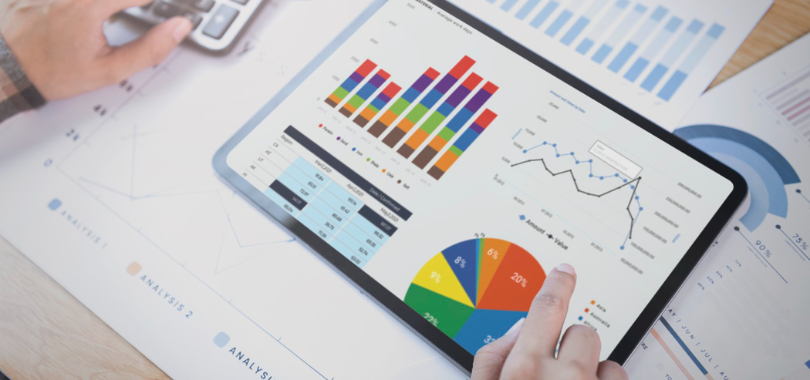Standardizing KPIs: A Success Formula in Secondary Benchmarking Studies

Image Source: Freepik
Benchmarking is a highly structured process which aims to improve the performance of an organization by comparing it with other competitors or with the market’s best practices. Secondary benchmarking refers to a benchmarking study that is based on data which is accessible to the public and the comparison is usually done within a specific industry. The gathered data comes mostly from annual, sustainability or financial reports of the companies chosen as benchmarking partners.
Although less complex and much more limited, secondary benchmarking has specific advantages, as it is easy to deploy and it has the capacity to highlight key relevant aspects about the industry – trends or top performers. Moreover, secondary benchmarking helps identify the industry’s common and primary benchmarks, and it can form the basis of a very well structured primary benchmarking project.
For a better understanding of the importance of the key performance indicators (KPIs) used, it is mandatory to comprehend the difference between KPIs and benchmarks. Benchmarks play a key role in any benchmarking project and they can be seen either as the company’s goals, or as a baseline.
In the first case, companies usually choose benchmarks based either on the industry’s standards, or on top performance in the industry. These two set the performance level for all the other actors within the industry. In the latter case, benchmarks are used to highlight the current level of performance and to enable goal setting to increase performance.
In both cases, it is mandatory to have a performance management system in place and to measure performance through KPIs on a regular basis, at the departmental or organizational level. A performance management system pinpoints the current level of performance and enables organizations to see the differences between their performance and the industry’s average level of performance or that of the best performers within the industry.
However, in practice the situation is quite different and given the fact that organizations measure different indicators based on the key elements of their strategic objectives and their development strategy, a lot of differences between indicators or measurements can be spotted.

Image Source: Freepik
Read More >> Is Benchmarking Worth a Company’s Investment and Time?
For example, some companies may focus on constantly innovating and improving their products, while other organizations within the same industry may perceive a high customer service performance as a key driver for their development. In this case, it is only natural that the production KPIs for the first type of organization would include:
- % Defects rate;
- # Units per man-hour;
- # Maintenance backlog;
- $ Cost of poor quality (COPQ);
- % Production uptime; or
- % Scrap rate.
One the other hand, organizations like the one in the second scenario will focus on KPIs such as:
- % Drop call rate;
- % Customer calls answered in the first minute;
- % Agent utilization;
- # Call handling time;
- # After call work time; or
- % Calls answered within SLA.
While this can block the actual comparison stage of a benchmarking process, it can also be seen as an opportunity, because it can drive organizations to change their focus, or at least consider giving more attention to another part of their business based on the common KPIs used within the industry.
One other important aspect to consider when choosing KPIs for a benchmarking project is the availability of data. For a complete and relevant output, you need to make sure that the chosen KPIs are reported by most of the benchmarking partners, or that the data has been available for more than just one year.
This will on one hand help you during the comparison process, and on the other hand, it will make it possible for you to spot the pattern of development of a single company. It will be hard to draw any insight, if just one organization reports that KPI and if data is available for a single year.
Based on the experience gained from deploying benchmarking projects and working with KPIs, the specialists at The KPI Institute have encountered one recurring issue which may impact the deployment of a benchmarking project. This issue concerns the terminology used when referring to KPIs and performance management in general.
Each company uses its own terminology and refers to specific processes in a language fostered by its organizational culture. Although two companies might measure the same indicator, they might be using different words and formats to express it.
For example, in the latest benchmarking project deployed by The KPI Institute – the Secondary Benchmarking Report Series within the Utilities sector – we have noticed that when referring to interruptions, some organizations named this term “supply interruptions” and others “interruption time.”

Image Source: Freepik
Hence, to make sure that the results of a secondary benchmarking project are as accurate and as complete as possible and that similar KPIs are easily identified, I would recommend to start the data analysis phase with standardizing the names of all indicators from the data base according to TKI’s standards:
- Use a short and concise name;
- Add a symbol in front based on what the KPI measures;
- Use the same name for indicators measuring the same process.
Moreover, the unit of measurement might differ from one company to another – some might measure the interruption time of supply for 100 customers, while others for 1000.
Another KPI example from the Secondary Benchmarking Report Series within the Electricity sector is the rate of electricity consumption, which can be measured in GWh or in MWh. Having different units of measurement affects the final output as the data cannot be compared.
For the first example, the data can easily be manipulated in such a way that it can be compared. If we are interested to report the numbers for 100 customers we can multiply the results for 1000 customers by 10. In the second case, we want to standardize units of measurement such as GWh and MWh, by simply converting one of them into the desired one, as per international standards.
In conclusion, make sure that you use these three simple recommendations in order to choose and standardize the indicators for your benchmarking report, as this is a very important step in the beginning of any benchmarking project:
- Consider the availability of data during the KPI selection process;
- Standardize the name of the KPI;
- Standardize the unit of measurement.
Read More >> Why Is Benchmarking Vital to Your Business?
If you wish to know more about benchmarking and all the challenges associated with it, The KPI Institute’s training program, Certified Benchmarking Professional, is designed to fill the gaps you might have or to provide complete new knowledge about aspects on how to conduct a benchmarking study.
For further knowledge, feel free to download any of our webinars that are focused around the idea of Benchmarking or take a look at our Benchmarking Solutions, which span from audit services to Benchmarking framework optimization.
Interested in more benchmarking best practices? Click here.**********
Editor’s Note: This article has been updated as of September 17, 2024.

